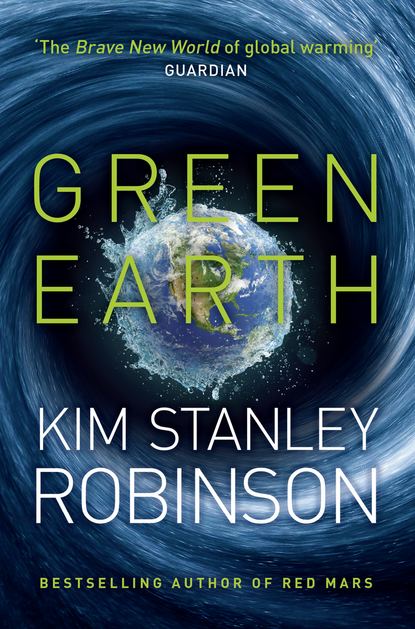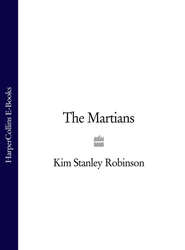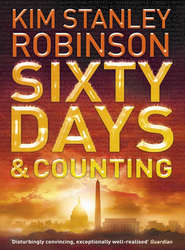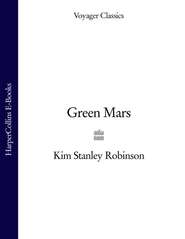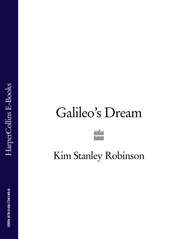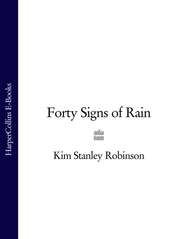По всем вопросам обращайтесь на: info@litportal.ru
(©) 2003-2024.
✖
Green Earth
Автор
Год написания книги
2018
Настройки чтения
Размер шрифта
Высота строк
Поля
Chapter 13: Back to Khembalung (#litres_trial_promo)
Chapter 14: Is There a Technical Solution? (#litres_trial_promo)
Chapter 15: Autumn in New York (#litres_trial_promo)
Chapter 16: Optimodal (#litres_trial_promo)
Chapter 17: The Cold Snap (#litres_trial_promo)
Chapter 18: Always Generous (#litres_trial_promo)
Chapter 19: Leap Before You Look (#litres_trial_promo)
Chapter 20: Primavera Porteño (#litres_trial_promo)
PART THREE: SIXTY DAYS AND COUNTING (#litres_trial_promo)
Chapter 21: A New Reality (#litres_trial_promo)
Chapter 22: Cut to the Chase (#litres_trial_promo)
Chapter 23: Going Feral (#litres_trial_promo)
Chapter 24: The Technological Sublime (#litres_trial_promo)
Chapter 25: Undecided (#litres_trial_promo)
Chapter 26: Sacred Space (#litres_trial_promo)
Chapter 27: Emerson for the Day (#litres_trial_promo)
Chapter 28: Terraforming Earth (#litres_trial_promo)
Chapter 29: The Dominoes Fall (#litres_trial_promo)
Chapter 30: You Get What You Get (#litres_trial_promo)
Praise (#litres_trial_promo)
Acknowledgments (#litres_trial_promo)
About the Author (#litres_trial_promo)
Books by Kim Stanley Robinson (#litres_trial_promo)
About the Publisher (#litres_trial_promo)
INTRODUCTION (#ulink_3e1dc64c-6a30-557c-b5cd-79eae0580556)
Peter Matthiessen, who died in 2014, was a great writer. His non-fiction is superb, and his novels are even better: At Play In the Fields of the Lord is an epic thing, and Far Tortuga is brilliant and moving, one of my favorite novels. You read those books, you’ve lived more lives.
His third great novel has an unusual publishing history. It first appeared as a trilogy, in volumes called Killing Mister Watson, Lost Man’s River, and Bone By Bone. Then about ten years later it reappeared in a single volume, considerably compressed by Matthiessen, titled Shadow Country. When I picked up that book in a bookstore and read Matthiessen’s foreword explaining what he had done, I immediately said to myself, “I want to do that with my climate trilogy.”
This reaction surprised me. I had not been aware that I harbored any longing to revise those books. When I finish a novel I generally move on without a lot of looking back. On completion I feel a glow, as when finishing any job, but it’s also a little sad, because the characters stop talking to me. It’s like being Calvin and watching Hobbes turn back into a stuffed doll. Could be tragic, but in my case there is a solution, which is simply to start another novel. That’s what I do, and on it goes.
But in the case of my climate trilogy, which was published between 2004 and 2007 under the titles Forty Signs of Rain, Fifty Degrees Below, and Sixty Days and Counting, it appeared that I still had the urge to tinker. After some reflection it began to make sense. Almost fifteen years have passed since I started that project, and in that time our culture’s awareness of climate change has grown by magnitudes, the issue becoming one of the great problems of the age. In this changed context, I had the feeling that quite a few of my trilogy’s pages now spent time telling readers things they already knew. Some of that could surely be cut, leaving the rest of the story easier to see.
Also, my original idea had been to write a realist novel as if it were science fiction. This approach struck me as funny, and also appropriate, because these days we live in a big science fiction novel we are all writing together. If you want to write a novel about our world now, you’d better write science fiction, or you will be doing some kind of inadvertent nostalgia piece; you will lack depth, miss the point, and remain confused.
So I felt then and still feel that my plan was a good one; but there was a problem in it that I didn’t fully gauge while I was writing. Science fiction famously builds its fictional worlds by slipping in lots of details that help the reader to see things that don’t yet exist, like bubble cities under the ice of Europa. Just as famously, novels set in the present don’t have to do this. If I mention the National Mall in Washington D.C., you can conjure it up from your past exposure to it. I don’t have to describe the shallowness of the reflecting pools or the height of the Washington Monument, or identify the quarries where that monument’s stone came from. But the truth is I like those kinds of details, and describing Washington D.C. as if it were orbiting Aldebaran was part of my fun. So I did it, but afterward it seemed possible that occasionally I might have gone too far. Every novel is like a ship and has its own Plimsoll line, and if you load it past that line, a storm can sink it. Readers may be inclined to abandon ship, or refuse to get on in the first place.
So with those considerations in mind, I went through my text and cut various extraneous details, along with any excess verbiage I could find (and I could). Inspired by Matthiessen, who compared his middle volume to a dachsund’s belly, and shortened his original 1,500 pages to 900, I compressed about 1,100 pages to about 800. Nothing important was lost in this squishing, and the new version has a better flow, as far as I can tell. Also, crucially, it now fits into one volume, and is thereby better revealed for what it was all along, which is a single novel.
If anyone wants the longer version of this story, it will always exist in the original three books. That trilogy was sometimes called The Capital Code, but more often Science In the Capital, the title I preferred. Those titles can continue to designate the original trilogy. This shorter version is called Green Earth, I’m happy to say. It’s a chapter title in my Blue Mars, and I always wanted to put it on a book, as it’s a very nice description of what we can achieve in the coming centuries, if we succeed in building a sustainable civilization. We haven’t done that yet, but now’s the time to start. This novel is one version of what that start might look like.
It’s a story about many things: climate change, science administration and politics, Buddhism, biotechnology and investment capital, homelessness, sociobiology, surveillance, life in Washington D.C., life in a treehouse, life with a fractious toddler. A kitchen sink makes an appearance. With that much thrown in, it should not be surprising that the story “predicted” quite a few things that have since come to pass; near-future science fiction always does that.
Still, while working on this version I was startled pretty often by such pseudo-predictions. That the storm that wrecks the East Coast was named Sandy is strange enough to be one of J. W. Dunne’s examples of precognition in An Experiment With Time—in other words, a coincidence, but quite a coincidence.
The other good calls, especially about climate and weather, were less accidental. As global temperatures rise, there will be more energy in the atmosphere, and more wild weather will ensue. So, Washington D.C. being so low-lying, whenever a big storm hits that area the Metro will flood, and I will get emails that are surprised or even congratulatory; it’s happened two or three times already. Recently the U.S. Army Corps of Engineers began quietly building a berm across the National Mall, to limit the flooding there sure to come. That will avert the final scene of Forty Signs of Rain, maybe, but Hurricane Katrina’s inundation of New Orleans occurred about a year after the book came out, and showed what could happen when a Corps of Engineers system is overwhelmed.
Since then some of the Sundarban islands have gone under for good, as happens to Khembalung in Fifty Degrees Below. And speaking of fifty below, shifts in the jet stream will keep bringing Arctic winters directly south onto the east coast of North America. It’s just happened two winters in a row, and as I write this, it’s colder in northern Virginia than it is in northern Alaska, hitting ten degrees below zero. Fifty below no longer seems so radical, although admittedly the numerology of my titles forced that number far down. But we’ll see. For sure we’ll be experiencing atmospheric rivers and polar vortexes; neither phrase existed when I wrote the book, but the phenomena did, and my story describes them both.
More disturbing, perhaps, is the way the National Security Agency’s recently revealed surveillance program has confirmed and even trumped this book’s spy plot. There were signs when I was writing that this kind of thing was going on, but I thought I was exaggerating it for satiric effect. Not at all. You are a person of interest, your calls are recorded, and computer programs are rating your potential danger to the system. And elections? Cross your fingers!
Anyway, with one thing or another, this book will continue to look prescient for a while longer. Already it’s turned into a peculiar mix of historical fiction, contemporary fiction, and science fiction, in the sense that some of it has already happened, some is happening now, and some of it will happen soon. Some of it will never happen, which is the wild card in the mix, and one of the things that makes it fiction. But fiction doesn’t have to come true to make it useful.
It’s paying attention to science that helped create whatever pseudo-predictions the book may contain. Science often tells us things we couldn’t see as individuals, and fiction can benefit from that infusion of artificial intelligence. Yes, science itself is the genius AI that we fear to create; it’s already up and running. Attend to it and act on what you learn. It’s the science fiction way.
The acknowledgments for all three volumes, now combined at the back of this book, show how much help I had along the way, and I want to thank everyone again. I also want to reiterate how much I owe to the National Science Foundation. They sent me to Antarctica as part of their Antarctic Artists and Writers Program in 1995, and that experience began this whole sequence of stories. After that they invited me to their headquarters often, first to serve on panels selecting subsequent groups of Antarctic artists, then to give talks and confer. Several NSF scientists spoke to me about their work in interesting ways, and Rita Colwell, the agency’s first woman director, told me things that helped me to write Diane Chang’s story. People there have been generous, and I hope it’s an association that will continue.
At one point after Forty Signs of Rain was published, I went to the NSF building in Arlington to give a lunchtime talk. My Antarctic patron Guy Guthridge had put up flyers next to the elevators that said NSF SAVES THE WORLD! and when the time came, the lecture hall was full. I began by reading the scene where my characters go to a brown-bag lunch talk in the NSF building. As I read the passage that describes those lunches, about people attending one more talk, even after all the years and all the grant applications—just out of a sense of curiosity, that basic emotion at the heart of scientific enterprise—I looked up from the page and sure enough, there they were again. I almost got dizzy, it was so circular. We laughed a lot that day, and though I know that the people there thought and still think that the idea of NSF saving the world is ludicrous, it is nevertheless true that they have good esprit de corps, they punch above their weight, they do good work. I think of them with admiration and gratitude, and as a crucial part of government of the people, by the people, and for the people. The scientific community they help to fund and organize may indeed have a big role in saving the world, so reading a story that describes us doing it can be encouraging. At the least it can make you laugh. I was told that one senior person at NSF finished reading the trilogy and immediately sold his house and moved into a camper in a trailer park. That’s taking things too far, probably, but I like the impulse, because we read novels to help create our sense of what the world means, to mentally travel in other people’s lives, and to get some laughs. So whether you light out for the territory afterward or not, read on, reader, and may this story help and entertain you. And thanks.
Kim Stanley Robinson, February 2015
(#ulink_e146297a-a8fc-5575-a222-6b230e368883)
CHAPTER 1 (#ulink_33ebeb6e-8a04-5084-9e86-6e5d844d1709)
THE BUDDHA ARRIVES (#ulink_33ebeb6e-8a04-5084-9e86-6e5d844d1709)
The Earth is bathed in a flood of sunlight. A fierce inundation of photons—on average, 342 joules per second per square meter. 4185 joules (one Calorie) will raise the temperature of one kilogram of water by one degree C. If all this energy were captured by the Earth’s atmosphere, its temperature would rise by ten degrees C in one day.
Luckily much of it radiates back to space. How much depends on albedo and the chemical composition of the atmosphere, both of which vary over time.
A good portion of Earth’s albedo, or reflectivity, is created by its polar ice caps. If polar ice and snow were to shrink significantly, more solar energy would stay on Earth. Sunlight would penetrate oceans previously covered by ice, and warm the water. This would add heat and melt more ice, in a positive feedback loop.
The Arctic Ocean ice pack reflects back out to space a few percent of the total annual solar energy budget. When the Arctic ice pack was first measured by nuclear submarines in the 1950s, it averaged thirty feet thick in midwinter. By the end of the century it was down to fifteen. Then one August the ice broke up into large tabular bergs, drifting on the currents, colliding and separating, leaving broad lanes of water open to the continuous polar summer sunlight. The next year the breakup started in July, and at times more than half the surface of the Arctic Ocean was open water. The third year, the breakup began in May.





